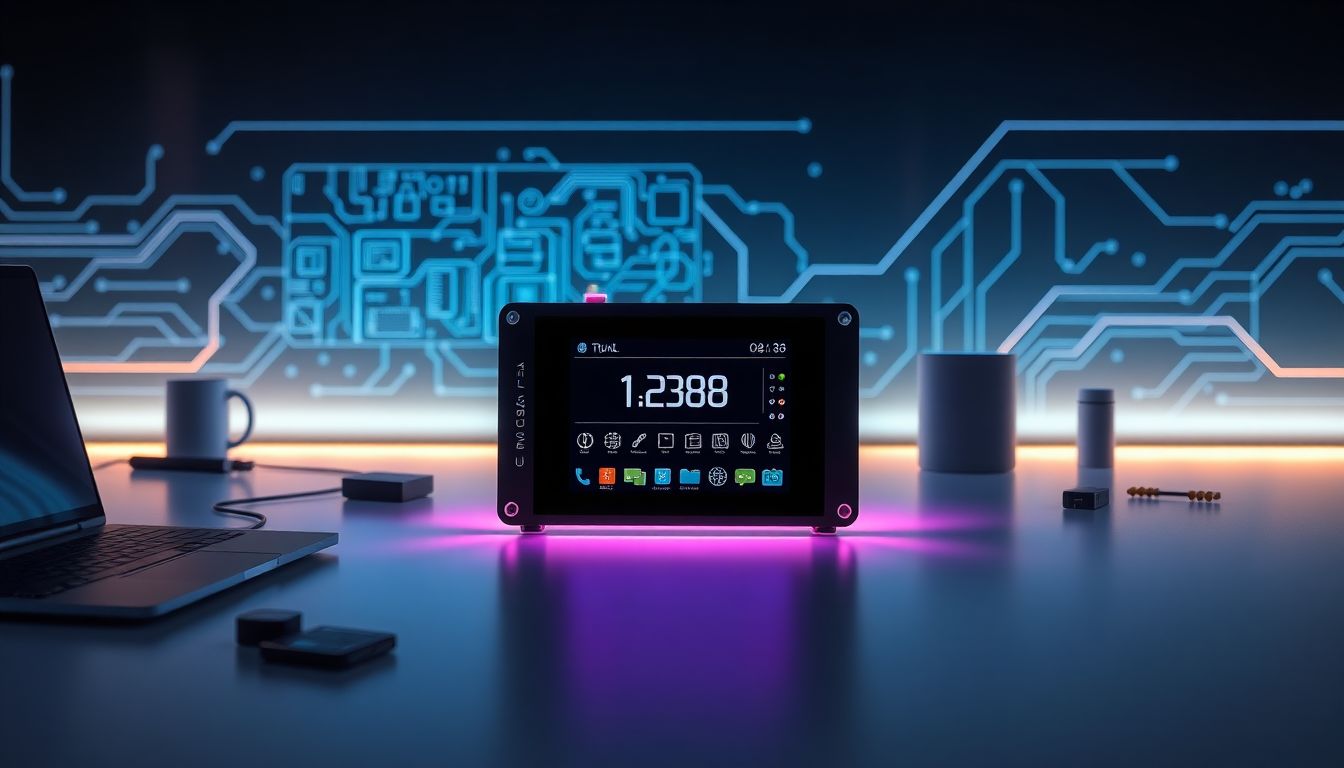Introduction
Technology boomed with automation, and IoT devices are now covering every nook and corner. They are changing the lifestyle and work culture from industrial networking to home automation. M5Stack DIAL V1.1 is one of the latest releases that ease such projects easier to carry out. If you’re prototyping or developing IoT, you would like to hear about its features for a greater likelihood of success. It’s the intelligent option for simplicity of setup and types of possibilities.
What is M5Stack DIAL V1.1?
Overview of the Device
M5Stack DIAL V1.1 is a highly featured small device whose feature is the priority agenda. It has a super feature set in small size and would be a perfect one to work on carry-on projects. It uses the very popular ESP32 chip for power and is capable of processing quickly with all types of connectivity features. Due to its small size, it becomes easy to attach or change accessories and modules.
Target Market and Uses
The product suits hobbyists, programmers, students, and companies. The product accommodates home automation controllers, data loggers, or remote sensors within difficult-to-reach locations. In case you are designing a weather station or industrial sensor, DIAL V1.1 can be built to custom specifications.
M5Stack DIAL V1.1 Specifications
Hardware Specs
It comes equipped with a dual-core processor ESP32 at its center, which is performance high but will not drain your battery. The on-board TFT LCD screen is precise in its information presentation, and it’s readable. Connectivity too is strong with Wi-Fi and Bluetooth integrated into it, so your devices will remain connected. It runs on rechargeable batteries with intelligent power management, making it possible for long usage without any issues.
Software and Compatibility
You can use the DIAL V1.1 with general-purpose development boards like UIFlow or Arduino IDE. That means you won’t need special expertise to start coding. It is compatible with a range of programming languages, so it is open to different users. It supports easy firmware updates, so it is easy to upgrade your device to the latest version and remain secure with minimal inconvenience.
Unique Features
One of the best things about DIAL V1.1 is that it was designed modularly. You can simply add more modules on top of it without having to do complicated wiring. It already has sensors attached, like temperature or humidity sensors, and ports attached so you can add more. Its heavy-duty construction also still functions under stressing conditions, and its user-friendly interface ensures that it is simple to use.
Pros and Cons of the Usage of DIAL V1.1
Ease of Creation and Deployment
DIAL V1.1 is easy to use. You find its friendly interface quite suitable to create prototypes at a speedy rate, i.e., you code fewer lines but more test codes. It becomes quite convenient to convert your ideas into actual functional devices at the speed of lightning.
Cost-Effectiveness
DIAL V1.1 is less expensive compared to most of the IoT boards. It is cost-effective and simple to scale your projects without spending a lot of money. Reduced deployment time also means fewer development dollars spent.
Reliability and Performance
The board will offer reliable Bluetooth and Wi-Fi connectivity even under continuous usage. Low power consumption allows devices to last longer on one battery or on remote sites, which is perfect for battery or off-site installations.
Real-Life Usage and Success Stories
DIAL V1.1 has been utilized by farmers to monitor weather and soil moisture, leading to additional harvests. DIAL V1.1 has also been utilized in the manufacturing sector to remotely monitor equipment and reduce downtime. These are everyday examples of how easy to use and practical this device really is.
Getting Started with M5Stack DIAL V1.1
Device Setup
Start with stacking the unit if required. Sensors or modules are simple to add because of its modular nature. Flashing firmware for a beginner is just a few clicks away—there are tutorials online.
Basic Development Tools
Use Arduino IDE or UIFlow to design the DIAL V1.1. Both are also extremely user-friendly to begin with for newbies and are packed with features. Debugging problems such as connectivity problems is less painful if you remain on official documentation or community tutorials.
Building Your First Project
Code quickly in fast chunks like Wi-Fi or screen networking on and get your project up in an instant. Don’t leave security features behind—firmware updates and robust passwords will safeguard your device. Use optimized code and settings to get the most performance, saving battery life and improving reliability.
Expert Insights and Industry Perspective
Top IoT manufacturers praise DIAL V1.1 as economical and multi-functional. M5Stack is still a trendsetter with multi-functional, mini-sized IoT devices, which are fulfilling the growing demand for mini-sized, intelligent solutions. The future also appears bright with industries and developers welcoming more of such tiny yet strong devices to connect everything in an ease-of-use manner.
Conclusion
M5Stack DIAL V1.1 is a highly capable little workhorse of a device for IoT development. Modularity, simplicity, and hardware capability combine to make it a top-notch platform for beginners and pros. It accelerates project completion and allows innovation sooner. DIAL V1.1 will suffice for a single sensor or home device. To maximize its use, tap into community resources, update firmware frequently, and keep experimenting with new modules and functionality.
Begin building smarter IoT solutions today with DIAL V1.1—infinite possibility awaits you.
